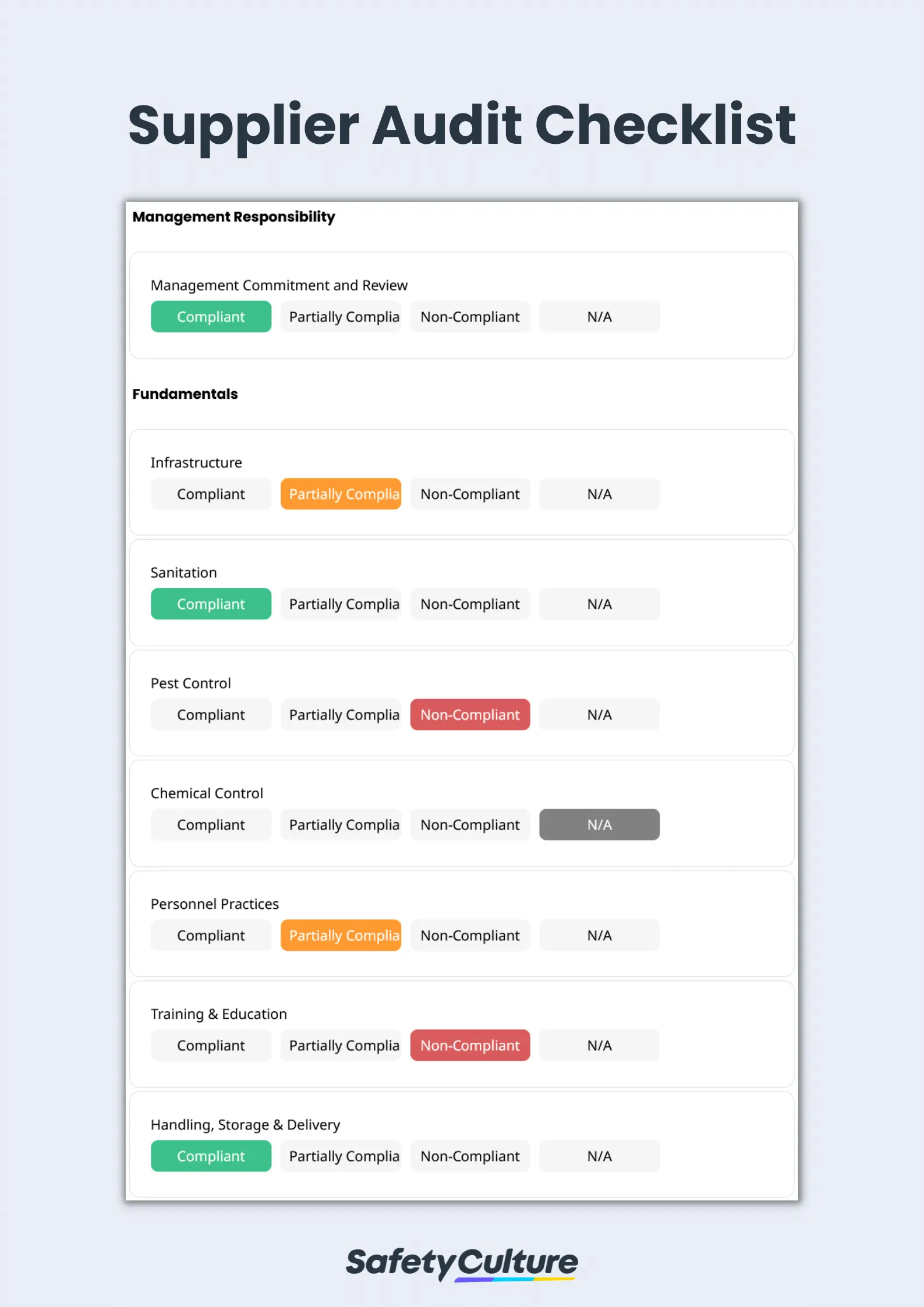What is a Supplier Audit?
A supplier audit is a formalized system of evaluating the reliability and competency of suppliers and vendors to deliver quality service. Auditing suppliers are foundational in establishing strong customer-supplier relationships. Supplier audits aim to assess and promote smooth operations in key business areas such as manufacturing, engineering, invoicing, QA, and shipping.
Supplier Audit Benefits
Performing supplier audits can help businesses determine if their supplier’s current performance meets business operational standards. Here are 4 benefits of auditing your suppliers:
- Manage production downtime—manage the reallocation of resources more effectively and track how suppliers perform against SLAs.
- Increase profitability—manage supplier risks and quality-related costs.
- Ensure quality and compliance—determine if your supplier meets your standards by auditing their performance on a regular basis. Identify repetitive errors and potential risks in the process and develop contingency plans to solve these problems.
- Continuous quality improvement—evaluate and monitor the quality of the service and products that your suppliers provide. Gain a comprehensive overview of how your supplier performs over time.
Importance of Performing Supplier Audits
A factory audit is a formalized system of evaluating the reliability and competency of suppliers and vendors to deliver a quality service. It is foundational in establishing a strong customer-supplier relationship. The supplier auditing process aims to assess and promote smooth operation in key business areas such as manufacturing, engineering, invoicing, QA, and shipping.
With consistently high-quality products come satisfied customers, and that is the end advantage of a supplier quality management solution. It can provide better visibility into supplier risks, improve control over quality and compliance, and lead to fewer non-conformances. Aside from those, here are a few other reasons to perform regular supplier audits:
Reduce non-conformances and CAPAs issued to suppliers
For instance, Company A faces 2,000 supplier non-conformances every year. Most of these non-conformances are likely to arise because the suppliers are of high risk and low maturity, or because they are not being audited thoroughly.
The supplier audit software solution can enable Company A to onboard a higher number of mature suppliers, while also increasing visibility into each supplier’s risk profile, and streamlining factory audit and inspection processes. As a result, Company A will be well-positioned to actually reduce the number of non-conformances by almost 80%. This, in turn, will lead to fewer CAPAs, and better cost savings.
Eliminate ambiguity in supplier audit reports
What one person says is a major non-conformance, another may describe as minor – and it’s difficult to prove when the only evidence that exists is a few pages of the auditor’s hand-written notes.
The supplier audit software takes away the confusion and ambiguity by making sure evidence is gathered and attached to an audit on-site, there and then. And reports are no longer affected by bias – it’s all there in black and white when you come to review the audit.
Optimize supplier audit management
With a supplier audit software, companies can segment their suppliers based on each supplier’s risk profile. This allows them to plan and prioritize their supplier audits more efficiently, and actually reduce the number of audits that need to be performed. In other words, instead of conducting 4 audits for every single supplier, the organization needs to conduct only one audit for Group A suppliers, and two audits for Group B suppliers because these suppliers have lower levels of risk and higher maturity.
The risk profile of each supplier can be calculated in the supplier quality management solution based on the ratings from supplier self-assessments, auditor validation, historical audit ratings, number of non-conformances, and other such factors. The audit frequency will vary based on the changing risk profile of the supplier.
Promote trust with suppliers with a transparent system
By harnessing the power of a supplier audit software, communication across global supplier teams, including real-time monitoring of audit status, can be vastly improved. This can make for a much smoother and transparent audit experience, as well as provide both the client and supplier with richer quality control insights.
FAQs about Supplier Audits
Conducting a supplier audit generally consists of the following steps:
- Develop a pre-audit questionnaire.
- Put together a team to conduct it.
- Notify suppliers.
- Hold an audit open meeting to establish introductions, finalize agenda, restate purpose and scope, and determine audit schedule.
- Performance of audit.
- Hold a debriefing meeting to review observations regarding the audit.
- Create a formal report.
A supplier audit involves the following types of audit:
- System audit – evaluates who, what,where,when, and how the quality system is used in producing the supplier’s products.
- Compliance audit – a review of written documentation and evidence of compliance with work instructions, and other established QA procedures.
- Process audit – verifies if the processes in place are produced according to written procedures, work instructions, industry standards, and other guides responsible for building the product in good quality.
- Product audit – inspects finished products to determine its conformance with set product specifications and requirements.
Generally, supplier audits should be performed at least once a year and as often as required, depending on the risks involved with that specific vendor, or supplier risk profiles. A supplier audit is often considered one of the best first steps toward better supply chain management and supplier selection process, improving quality and efficiency right at the source.
For example, maintaining the quality of a certain ingredient is crucial to manufacture your product safely. If that raw material from your supplier has been compromised—negatively affecting consumers, product quality, and production process—then you should audit that vendor more frequently.



